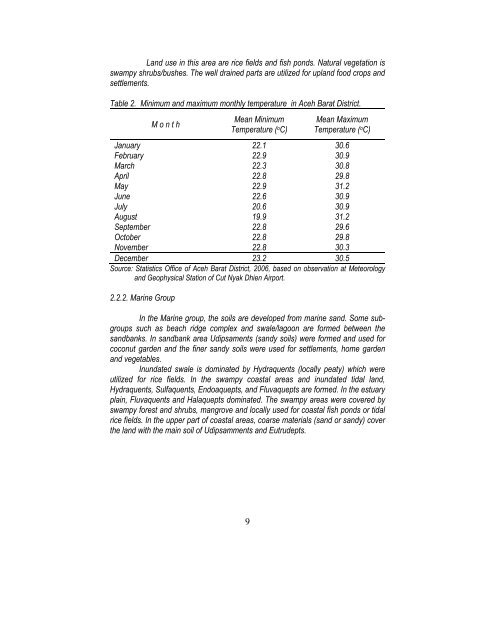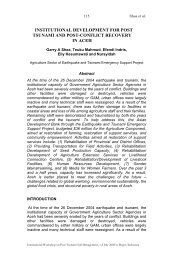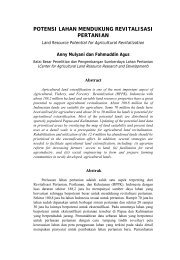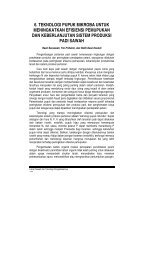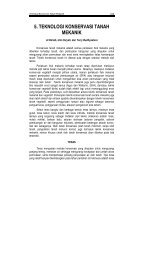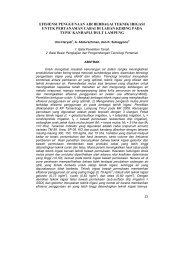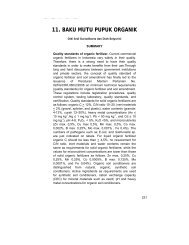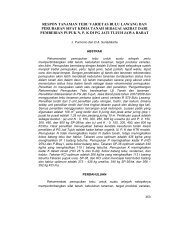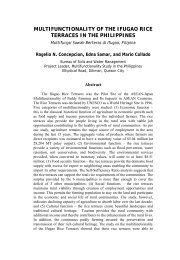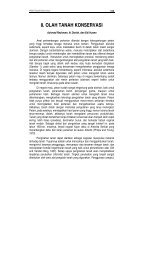booklet aceh barat.pdf - Balai Penelitian Tanah
booklet aceh barat.pdf - Balai Penelitian Tanah
booklet aceh barat.pdf - Balai Penelitian Tanah
You also want an ePaper? Increase the reach of your titles
YUMPU automatically turns print PDFs into web optimized ePapers that Google loves.
Land use in this area are rice fields and fish ponds. Natural vegetation is<br />
swampy shrubs/bushes. The well drained parts are utilized for upland food crops and<br />
settlements.<br />
Table 2. Minimum and maximum monthly temperature in Aceh Barat District.<br />
M o n t h<br />
Mean Minimum<br />
Temperature ( o C)<br />
9<br />
Mean Maximum<br />
Temperature ( o C)<br />
January 22.1 30.6<br />
February 22.9 30.9<br />
March 22.3 30.8<br />
April 22.8 29.8<br />
May 22.9 31.2<br />
June 22.6 30.9<br />
July 20.6 30.9<br />
August 19.9 31.2<br />
September 22.8 29.6<br />
October 22.8 29.8<br />
November 22.8 30.3<br />
December 23.2 30.5<br />
Source: Statistics Office of Aceh Barat District, 2006, based on observation at Meteorology<br />
and Geophysical Station of Cut Nyak Dhien Airport.<br />
2.2.2. Marine Group<br />
In the Marine group, the soils are developed from marine sand. Some subgroups<br />
such as beach ridge complex and swale/lagoon are formed between the<br />
sandbanks. In sandbank area Udipsaments (sandy soils) were formed and used for<br />
coconut garden and the finer sandy soils were used for settlements, home garden<br />
and vegetables.<br />
Inundated swale is dominated by Hydraquents (locally peaty) which were<br />
utilized for rice fields. In the swampy coastal areas and inundated tidal land,<br />
Hydraquents, Sulfaquents, Endoaquepts, and Fluvaquepts are formed. In the estuary<br />
plain, Fluvaquents and Halaquepts dominated. The swampy areas were covered by<br />
swampy forest and shrubs, mangrove and locally used for coastal fish ponds or tidal<br />
rice fields. In the upper part of coastal areas, coarse materials (sand or sandy) cover<br />
the land with the main soil of Udipsamments and Eutrudepts.


